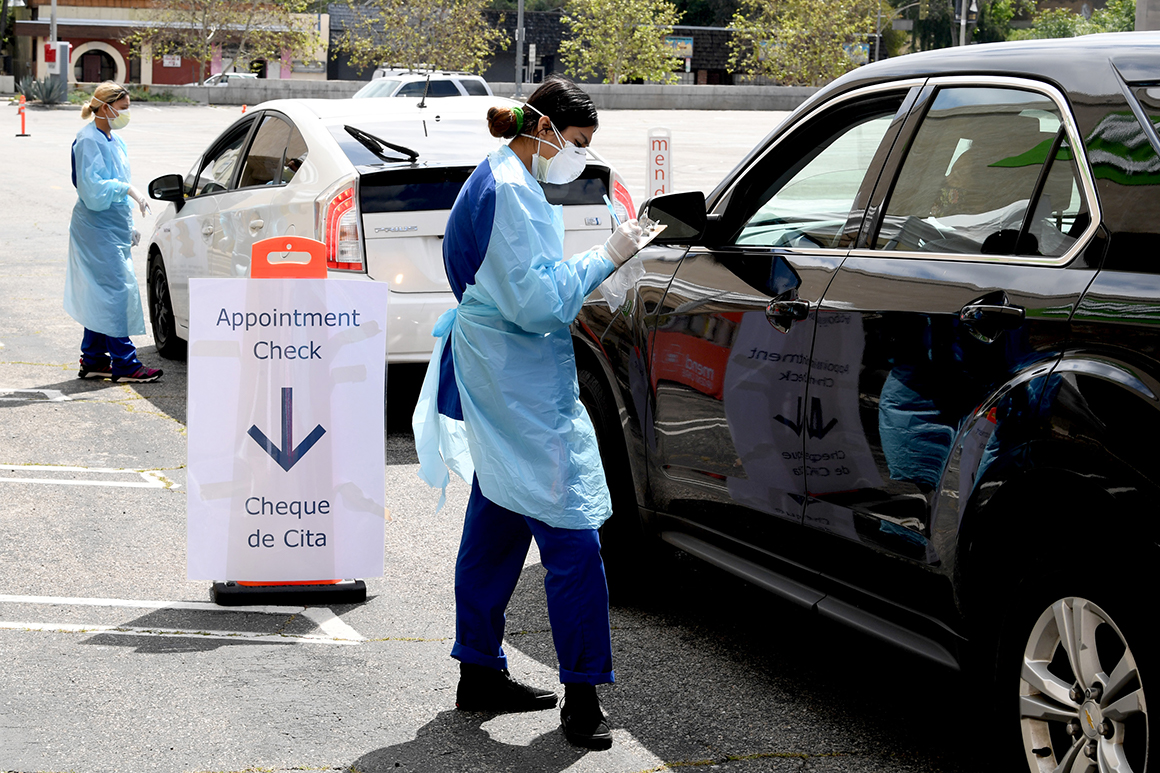
“During flu season we know we have a significant number of people who present with symptoms that could be COVID-19, and those people will all need to be tested to prevent any onward transmission,” said Reed Schuler, a senior policy advisor to Washington governor Jay Inslee. “That will be true for every state — whatever your daily or weekly testing numbers are for the summer, they need to be much higher in the fall and winter.”
Without a comprehensive national testing strategy, cities and states are creating a patchwork of plans of how many people to test and when.
Pennsylvania, relying in large part on a National Guard “strike force,” plans to test every single nursing home resident and staff member in nearly 700 facilities by July 24, and to do the same for about 1,200 other long-term care facilities after that.
In the last few weeks, Washington, D.C., has deployed mobile testing units and opened free, no-appointment walk-up sites at city firehouses and curbside tents — including one downtown close to where thousands regularly gathered to demonstrate.
The new sites have led to a surge in demand. The city tested 5,985 people during the second week in June compared to just 1,534 the first week of the month. But that is still far below D.C.’s daily testing capacity of 5,500, the mayor’s office said. On most days, fewer than 1,500 people are tested at all public and private sites citywide — and DC’s positivity rate only recently dipped below double digits.
Public health experts say both real and perceived hurdles remain to ensure adequate testing.
“Just because a state happens to have capacity doesn’t mean there aren’t still barriers that exist around testing,” said Tom Inglesby, director of Johns Hopkins University’s Center for Health Security.
“Transportation could also be an issue when people may not have cars. The site may not be distributed in a way that allows access, particularly for people of low economic status.”
Several state officials told POLITICO that they are trying to move from a testing system based on individual demand to regular screening of broad groups of people, such as nursing home or prison residents — but ongoing supply shortages and technology delays are hampering those efforts.
“We’d like to be able to do widespread population-based testing, but for that we need a very accurate point-of-care rapid test with very good sensitivity,” said Rachel Levine, Pennsylvania’s health secretary.
“If we had an oral or nasal swab that can give results in 15 to 20 minutes, that could be deployed in hospitals, the food industry, manufacturing plants, maybe even schools. But for now, that’s still aspirational.”
White House coronavirus coordinator Deborah Birx and other administration officials have said that antigen tests — which take minutes to process and can be administered in point-of-care settings — will be key to testing wide swaths of Americans in the fall.
The FDA has authorized only one such test so far, however. And antigen tests generally produce a higher rate of false results than the more complicated PCR tests now in wide use. That could limit the antigen tests’ usefulness.
“They should really only be used in symptomatic individuals, ideally, when you’re in a situation where you’re testing populations with high prevalence or high positivity rate,” Wroblewski said. “They could be really good for nursing homes or prisons that might be experiencing outbreaks when you want to segregate positive people quickly.”
Without the ability to predict what kinds of tests and how many will be available in the fall, state and local officials are using a broad range of tools to fight the pandemic. In Pennsylvania, for example, Levine is relying heavily on containment measures such as aggressive contact tracing and ramping up preparation for the flu season.
“We will double and triple our efforts to get people immunized for flu,” she said.
And in Washington State, Schuler says safely reopening schools will depend more on “infection control within facilities, cohorting and preventing mixing between populations” than testing alone.
“Even if you screen out several people at the beginning, you’re doing nothing to prevent community transmission that someone could acquire the very next week,” he said.
But there is no question that testing will remain a linchpin of the coronavirus response heading into the fall.
“What’s most important to know is if testing is done in the right way: soon after patients feel sick, intensively in nursing homes in other concrete facilities, and followed with prompt isolation, contact tracing and quarantine,” Frieden said. “The essence of an effective public health response is quickly finding and acting on new information.”
Brianna Ehley contributed to this report.
Source: politico.com
See more here: news365.stream






